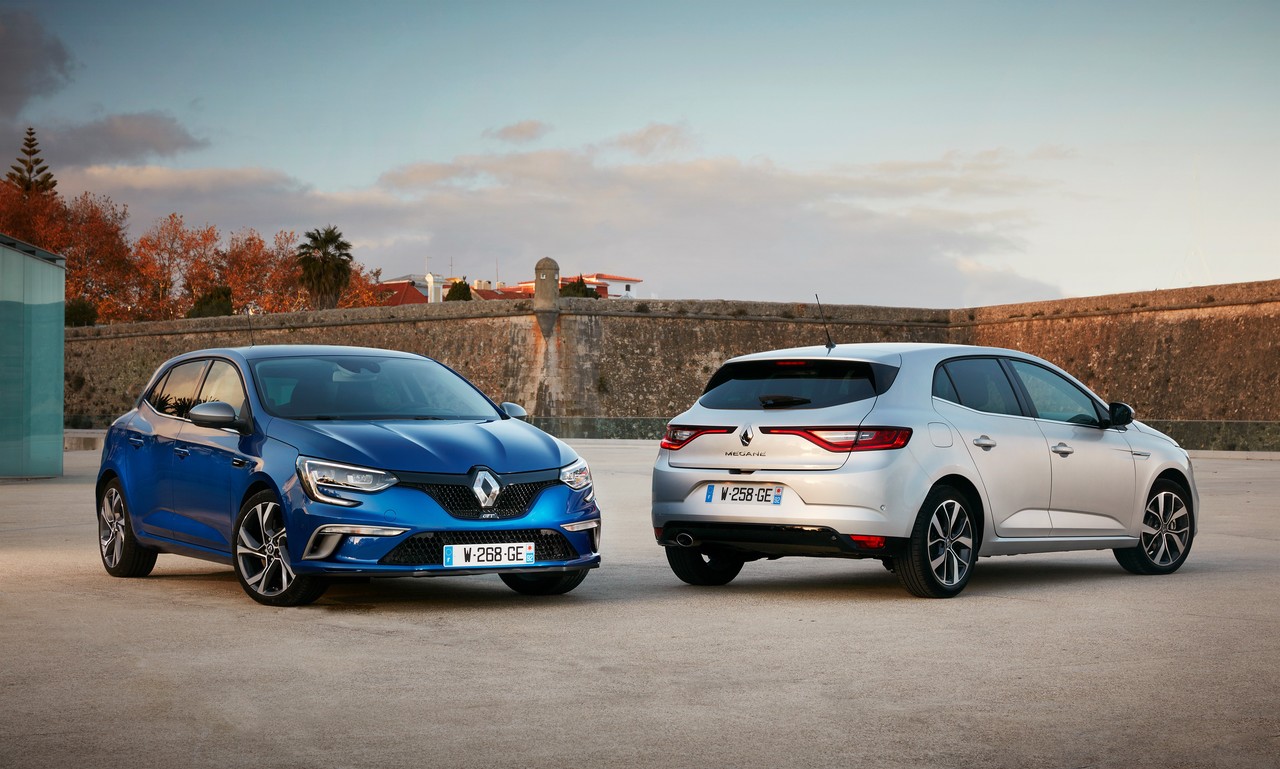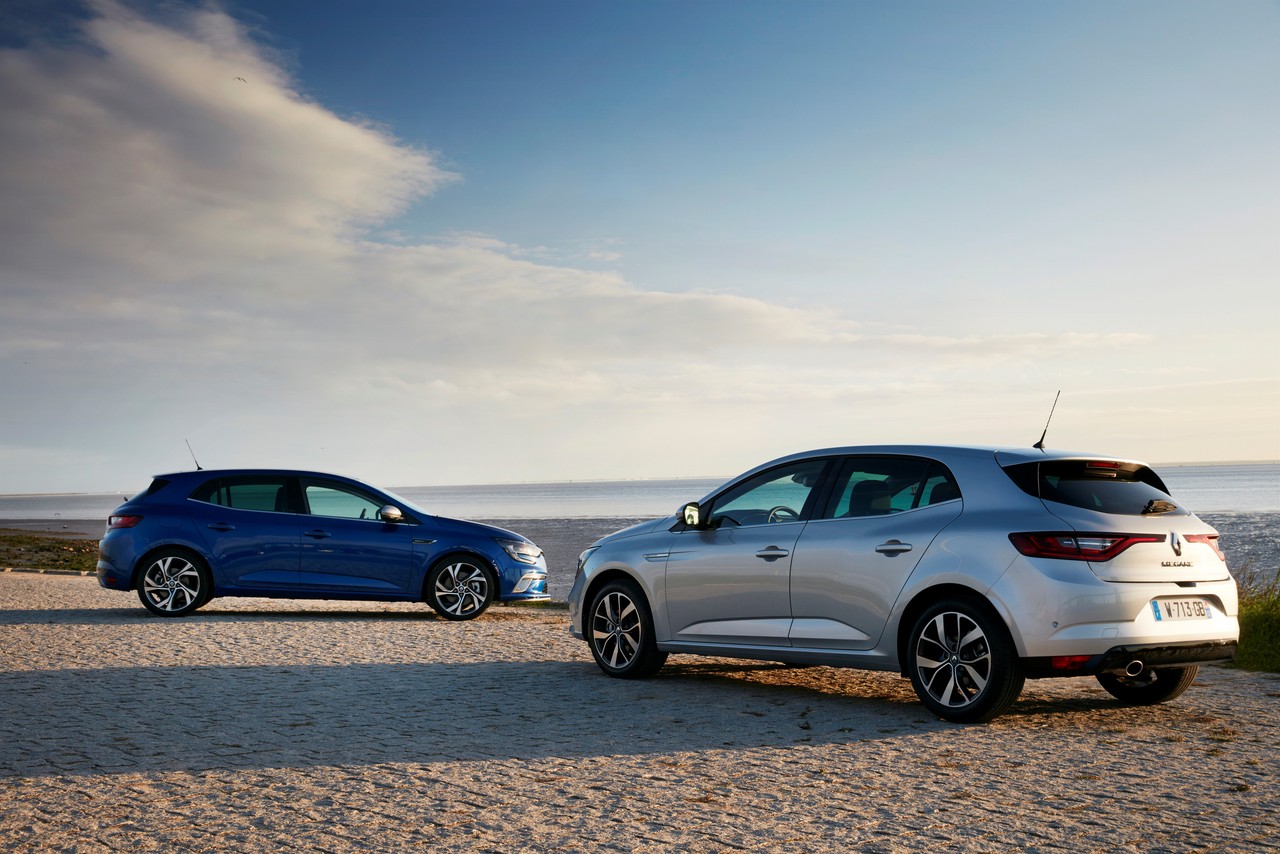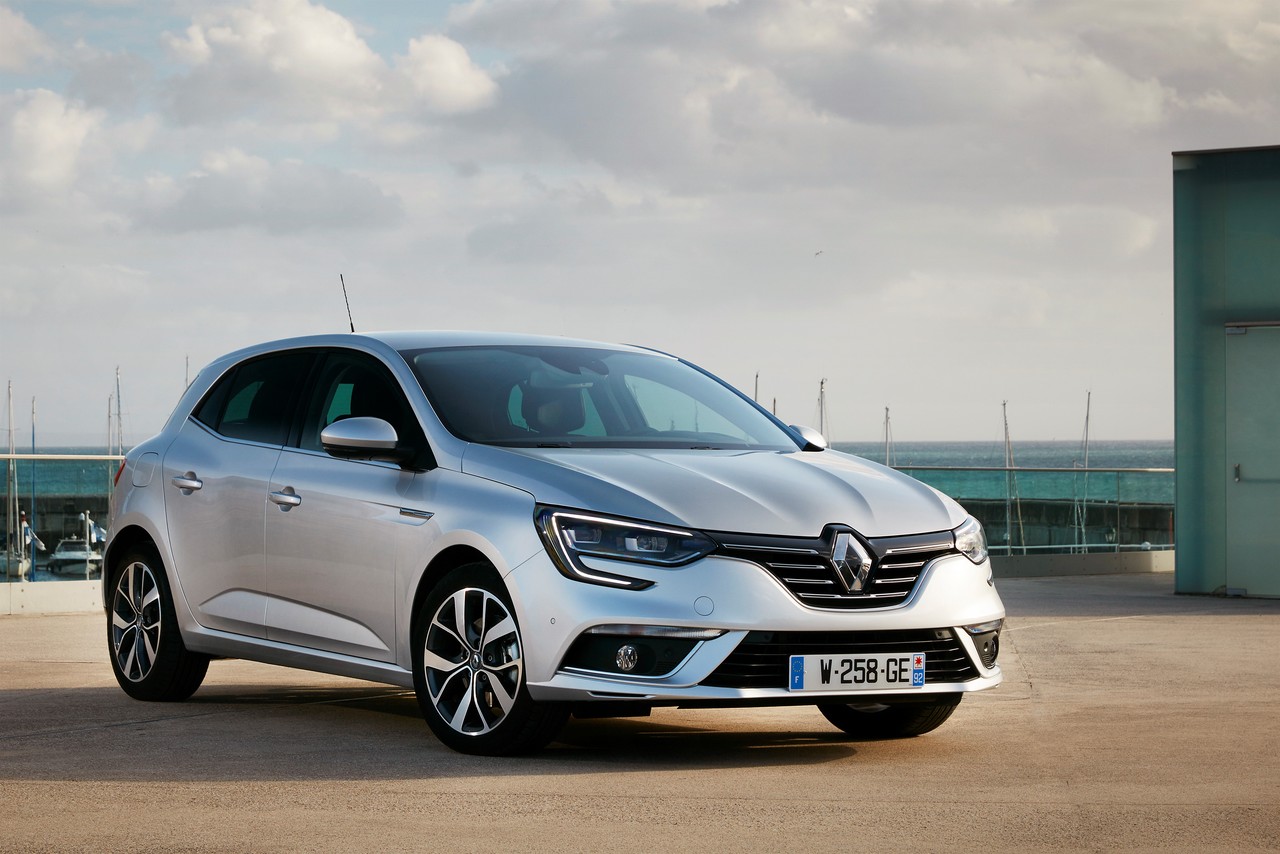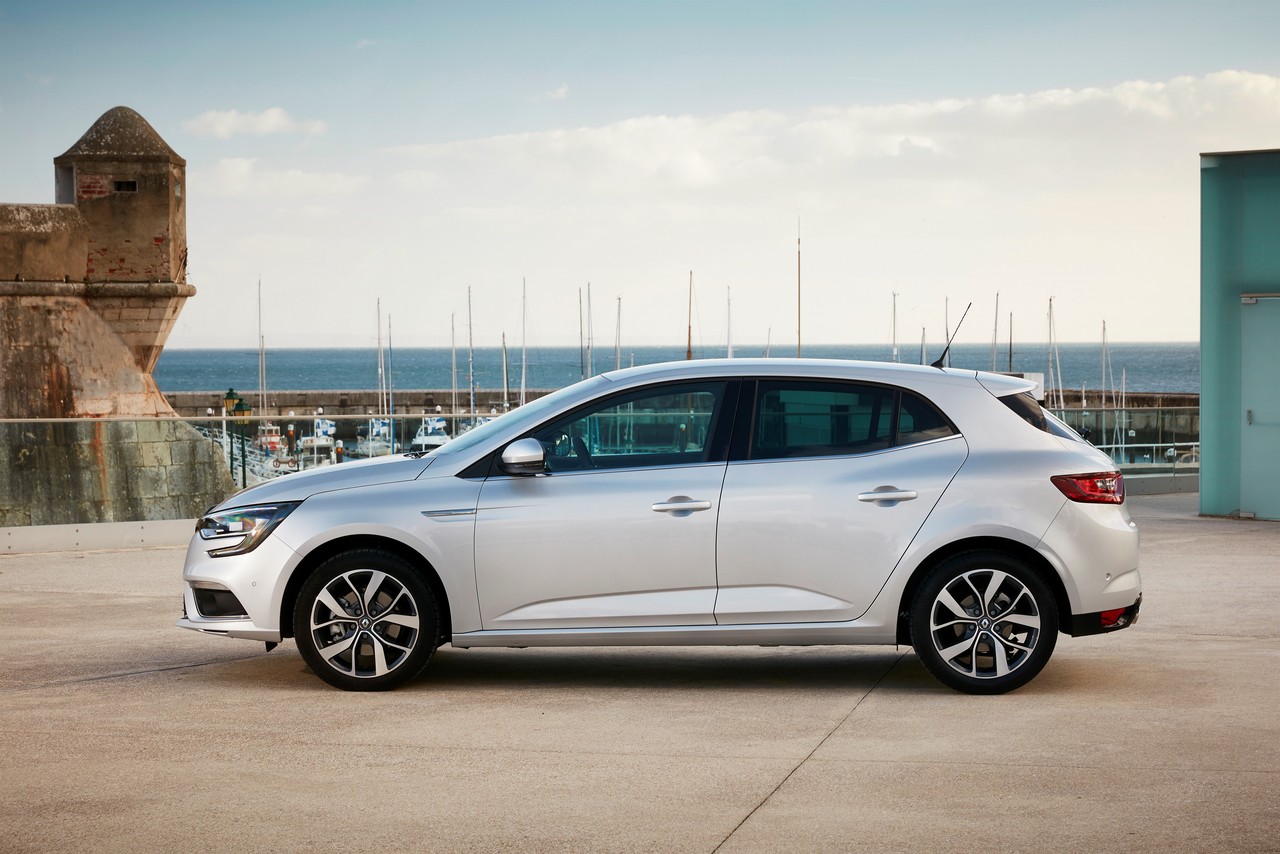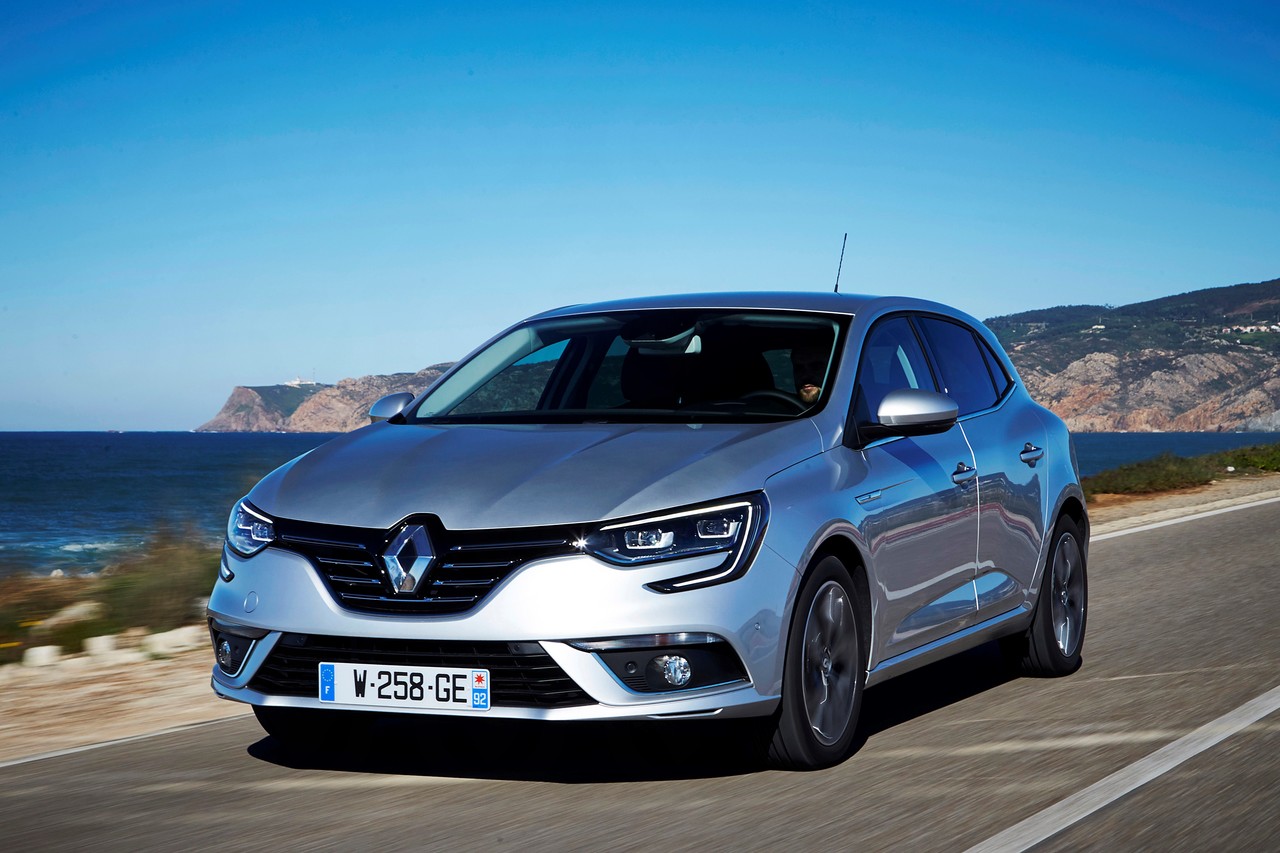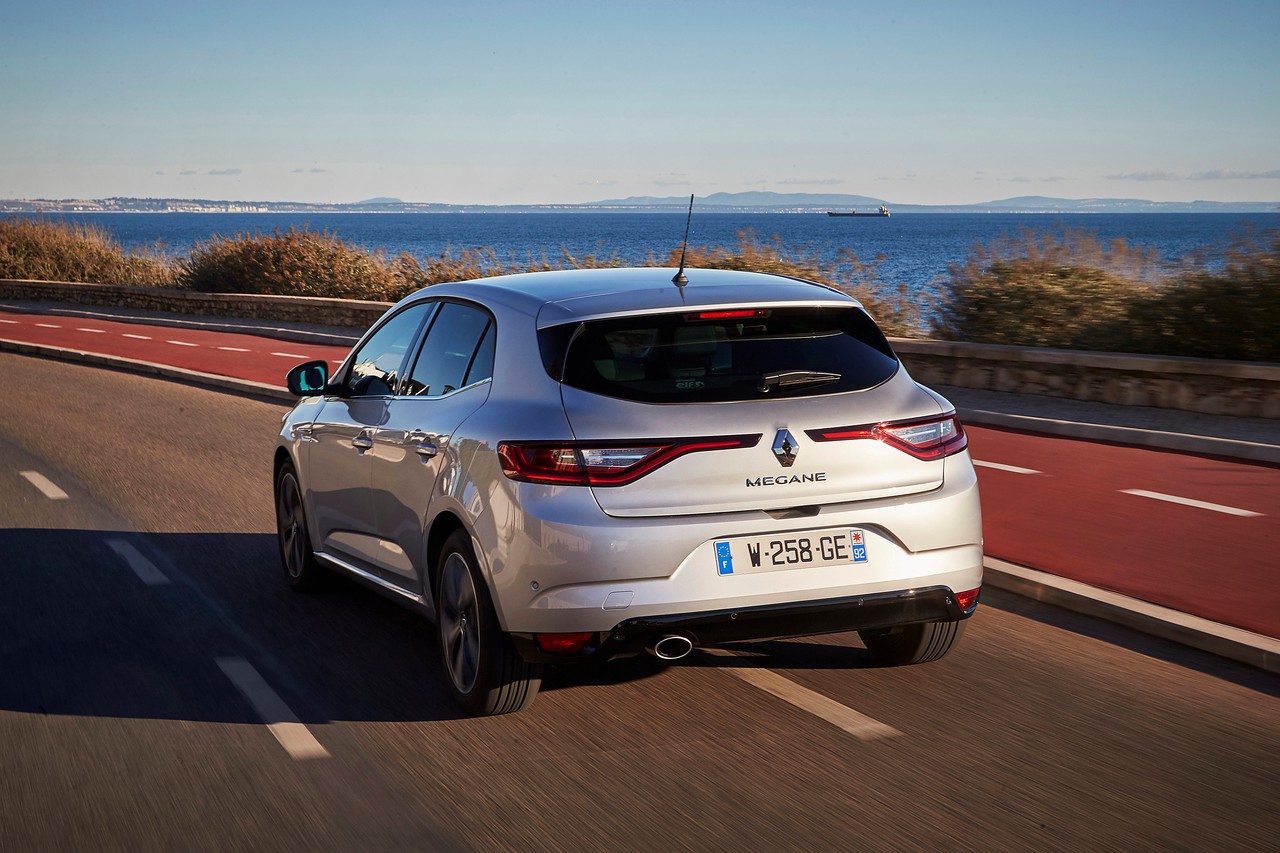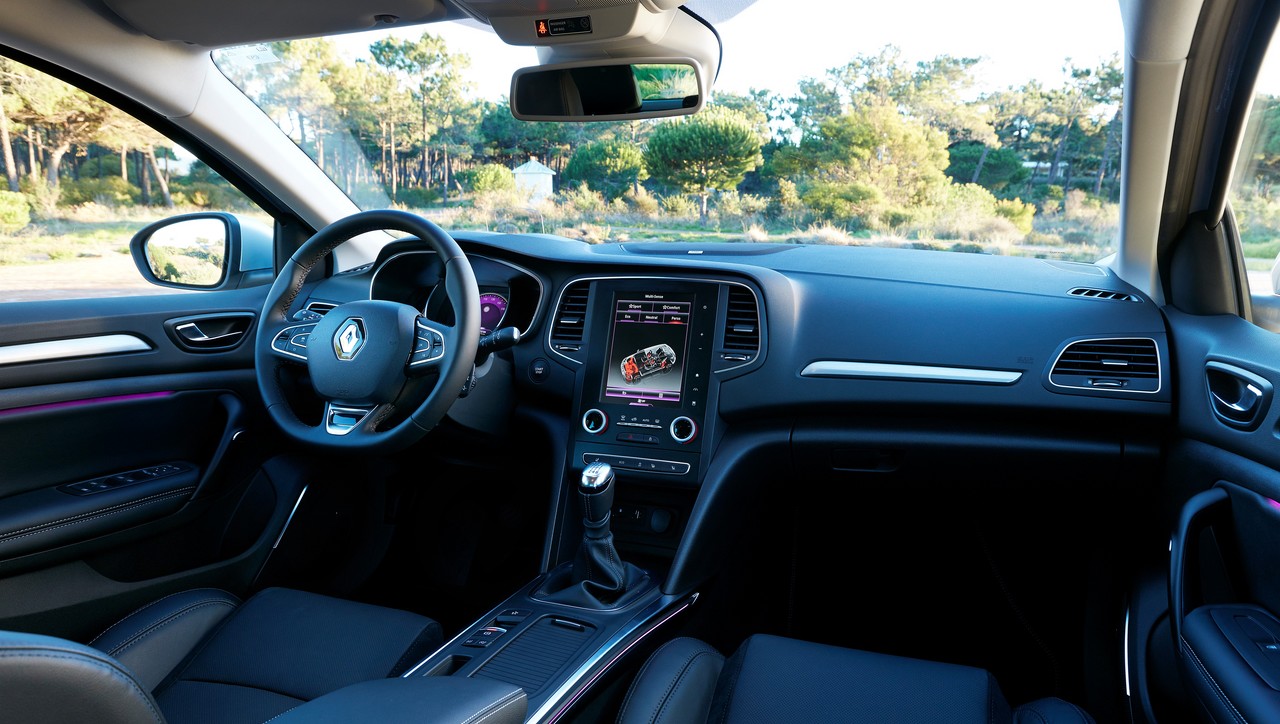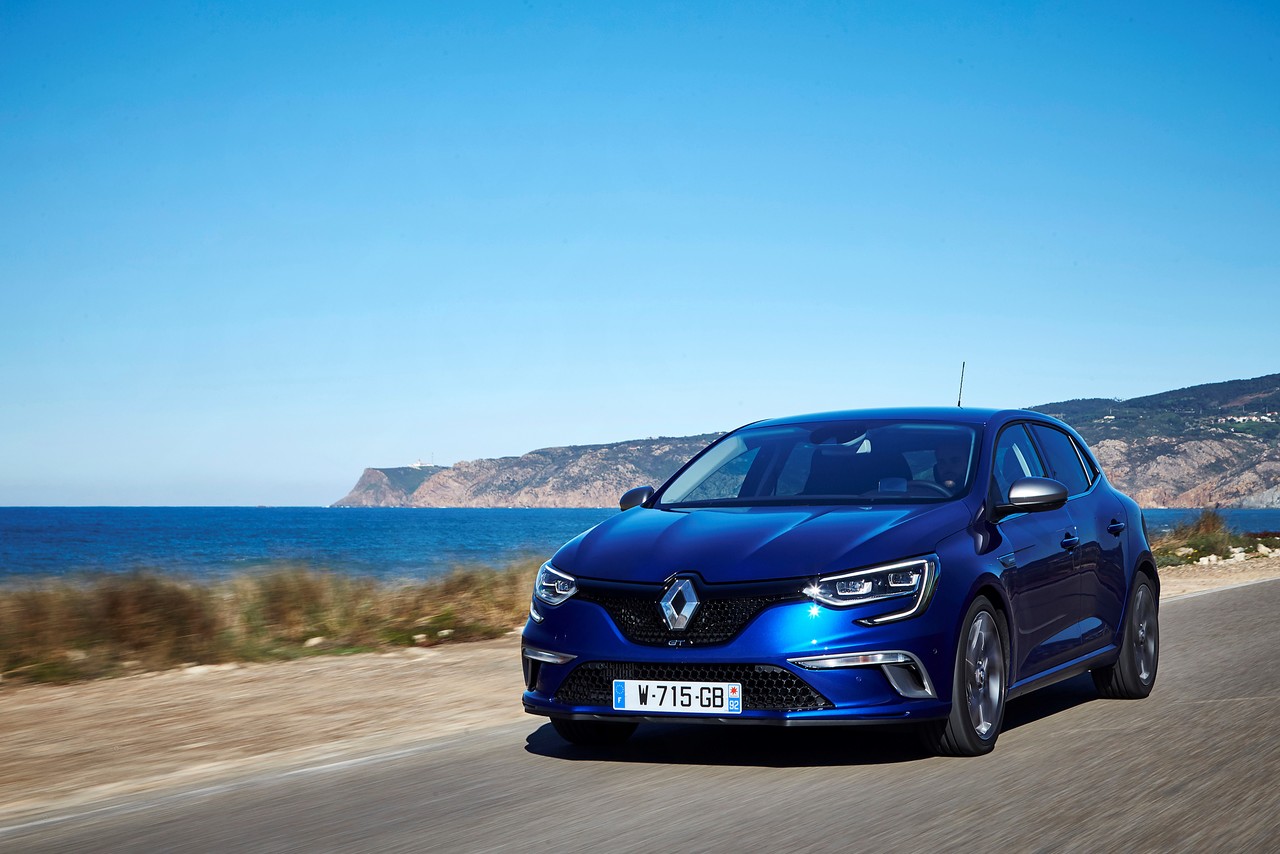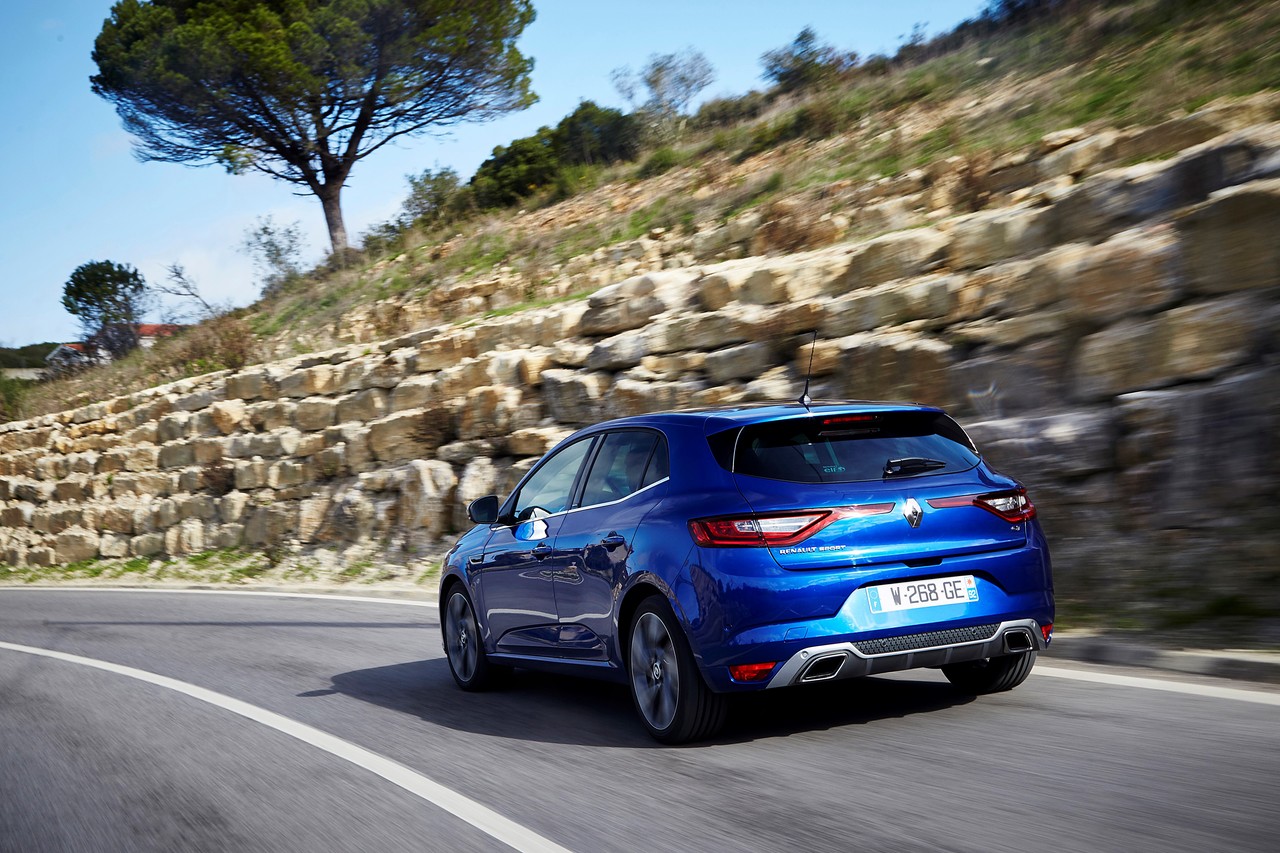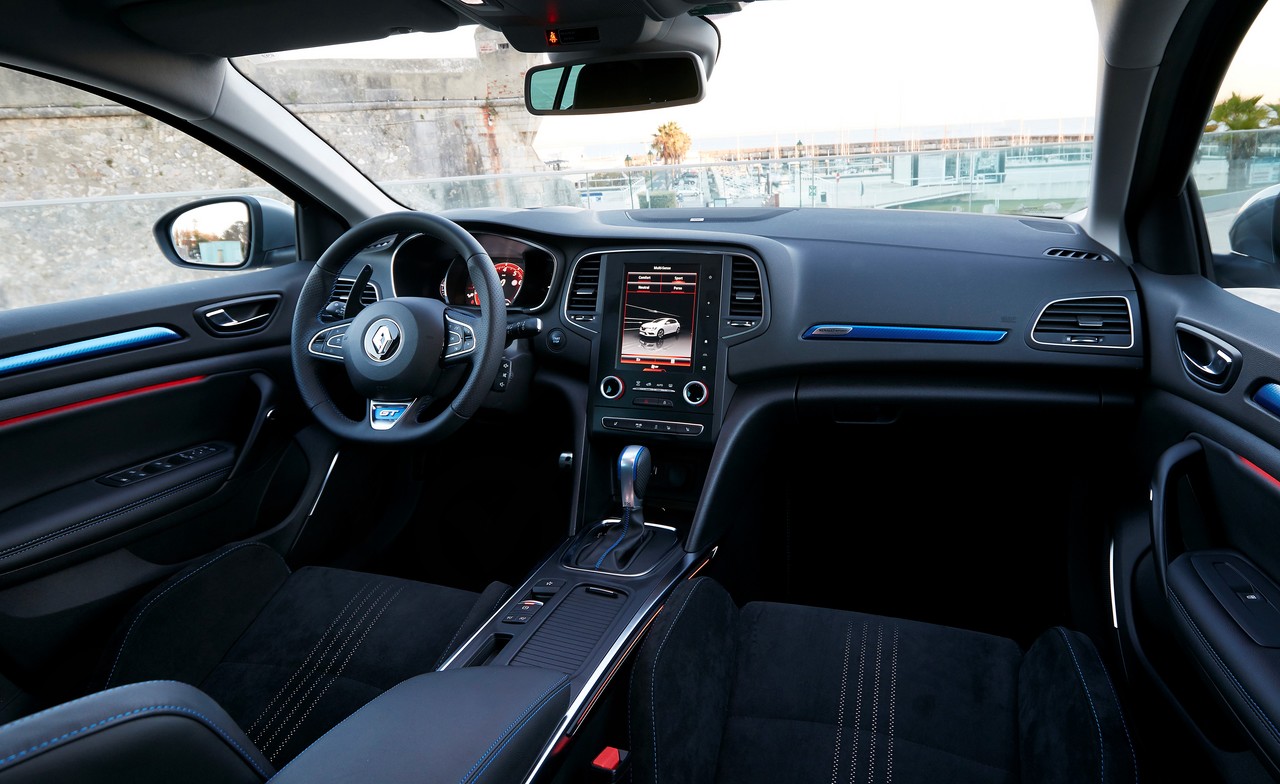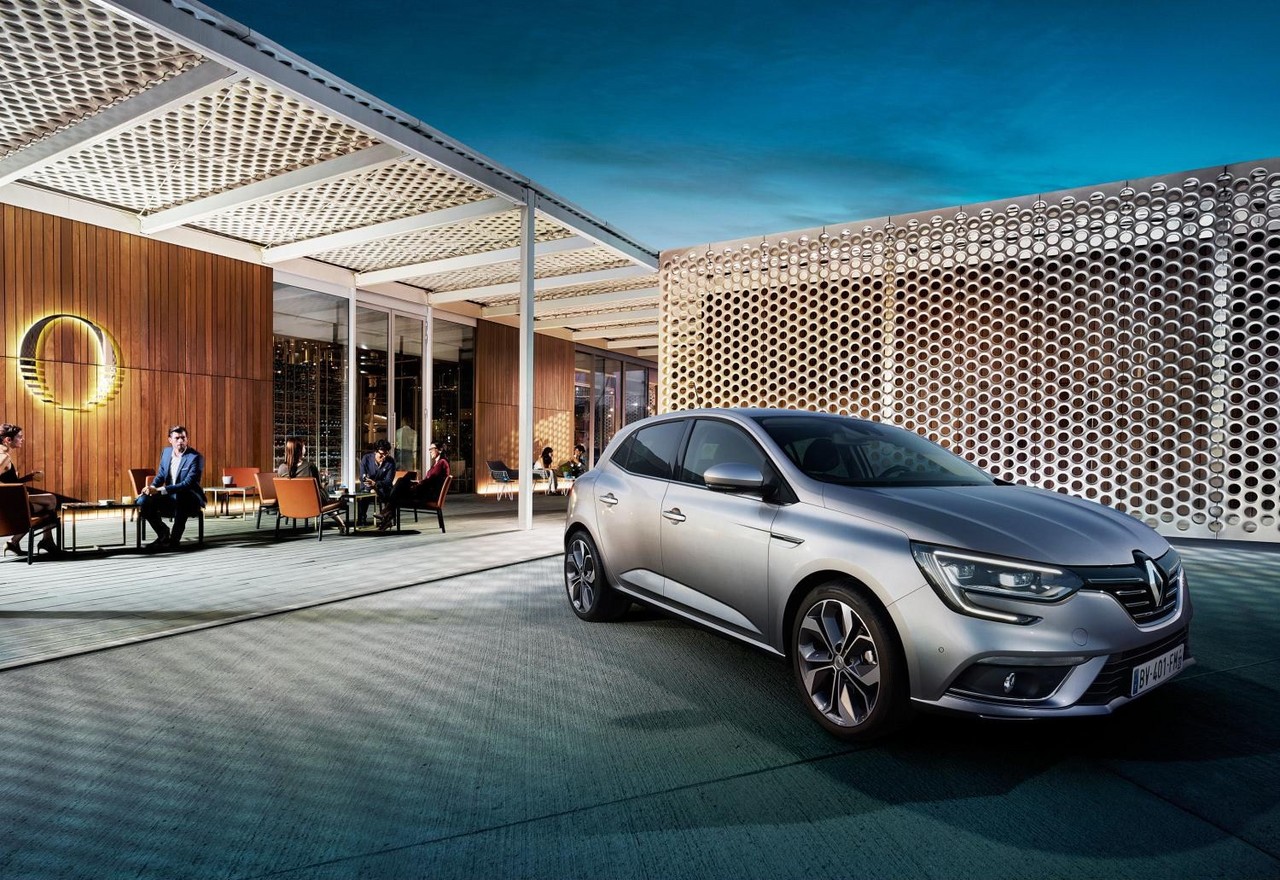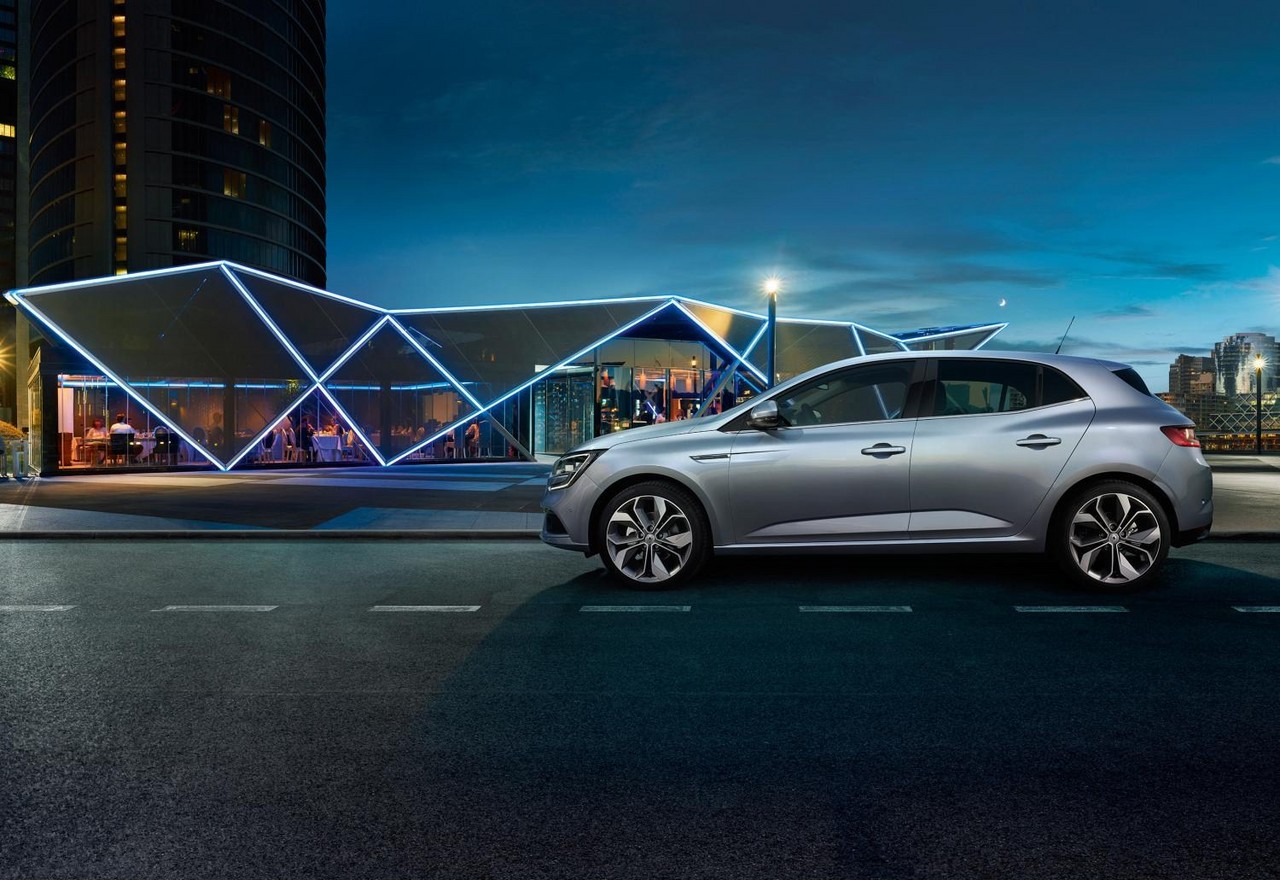
- Comfortable ride
- Economical 1.2-litre H5Ft turbo petrol engine
- Light steering makes low-speed manoeuvres easy…
- … but lacks weight and feel at higher speeds
- Limited dynamic ability
- Less interior space than rivals
- Megane GT lacks driver involvement
Overview
Released in Australia in September 2016, the Renault BFB Megane was a five-door hatchback; the KFB Megane Wagon and LFF Megane sedan have been reviewed separately. Manufactured in Palencia, Spain, the front-wheel drive Renault Megane was powered by 1.2- and 1.6-litre turbocharged petrol engines that were mated to either six-speed manual or seven-speed double clutch transmissions (Renault’s ‘EDC7’). Furthermore, the Megane hatch range consisted of Life, Zen, GT-Line and GT editions.
The BFB Megane range was subsequently simplified as Life editions were discontinued in 2018 and Zen editions in 2019.
Megane Energy TCe 130: H5Ft engine
For the Megane Energy TCe 130, the 1.2-litre H5Ft engine had an aluminium block and cylinder head, a low-intertia turbocharger, double overhead camshaft (chain-driven), four valves per cylinder, double-cam phasing variable valve timing (i.e. variable intake and exhaust valve timing) and a compression ratio of 9.5:1. For models with manual transmissions, the H5Ft engine also had a ‘Stop&Start’ function which enabled the alternator to recover kinetic energy produced under deceleration.
Megane TCe 205: M5MT engine
For the Megane GT, the 1.6-litre M5MT engine had an aluminium alloy block and cylinder head, direct fuel-injection, nano-finished double overhead camshafts, twin variable valve timing control (i.e. for intake and exhaust valves), four valves per cylinder (with beehive springs and sodium-filled exhaust valves) and a compression ratio of 9.5:1.
The Megane GT was equipped with a ‘Launch Control’ function which was activated by pulling and holding both gearshift paddles when the driver’s foot was on the brake pedal. When the driver’s foot pressed on the accelerator, Launch Control would activate as soon as the brake pedal was released and enabled the Megane GT to accelerate from rest to 100 km/h in 7.1 seconds.
For the Megane GT, the EDC transmission had a ‘Multi-Change Down’ function which enabled the driveshaft to downshift several gears in quick succession while braking by using the left gearshift paddle.
| Variant | Edition | Engine | Trans. | Peak power | Peak torque |
|---|---|---|---|---|---|
| Energy TCe 130 | Life | 1.2-litre H5Ft turbo petrol I4 | 6sp man., 7sp DCT |
97 kW at 5500 rpm | 205 Nm at 2000 rpm |
| Zen, GT-Line |
1.2-litre H5Ft turbo petrol I4 | 7sp DCT | |||
| Energy TCe 205 | GT | 1.6-litre M5MT turbo petrol I4 | 7sp DCT | 151 kW at 6000 rpm | 280 Nm at 2400 rpm |
Dimensions and styling
Compared to the Renault X95 Megane , the Renault BFB Megane was 64 mm longer (at 4359 mm), 6 mm wider (1814 mm), 34 mm lower (1438 mm) and had a 29 mm longer wheelbase (2670 mm). Furthermore, front track width increased by 47 mm (to 1593 mm) and rear track by 39 mm (1586 mm). While the Renault Megane Energy TCe 130 with manual transmission had a kerb weight of 1265 kg, kerb weight for the Megane GT was 1392 kg.
The Renault Megane had a luggage volume of 434 litres with the rear seats in position, though this increased to 1247 litres when the rear seats were folded down and luggage was filled to the roofline.
The fourth-generation Renault Megane could be identified by its C-shaped headlights, distinctive lighting signatures (front and rear) and chromed elements which emphasised the belt line, grille and door handles. According to Renault, ‘the slim creases on the bonnet, combined with the chrome beading and side air scoops, strengthen the character of the front face.’
Suspension
The Renault BFB Megane had MacPherson strut front suspension and a torsion beam rear axle. The Megane GT as differentiated by its unique springs, dampers and anti-roll bars which were designed to improve vertical body control.
Steering and 4CONTROL (four-wheel steering)
With the exception of the Megane GT TCe 205 which had rack-and-pinion steering with hydraulic power assistance, the 2016 Renault Megane had electric power steering assistance.
The Megane GT was equipped with Renault’s ‘4CONTROL’ four-wheel steering system. During low-speed manoeuvres (up to 60-80 km/h), 4CONTROL would turn the rear wheels in the opposite direction to the front wheels – by up to 2.7 degrees – for a smaller turning radius. At speeds above 80 km/h, the front and rear wheels would turn in the same direction – by up to 1.0 degree – for greater stability.
While the steering for the standard Megane required 2.9 turns from lock-to-lock and provided a turning circle of 11.2 metres, the steering for the Megane GT required 2.3 turns from lock-to-lock and its turning circle was 10.4 metres (kerb-to-kerb).
Safety equipment
Standard safety equipment for the Renault BFB Megane included dual front airbags, front side airbags, full-length curtain airbags, ABS, electronic brake force distribution, brake assist, electronic stability control, traction control and front seatbelts with pre-tensioners and load limiters.
Unique with the range, the Megane GT-Line was equipped with a Blind Spot Warning system which operated at speeds between 30 km/h and 140 km/h. Specifically, BSW could warn the driver of the presence of another vehicle in the driver’s blind spot via a visual signal in the door mirrors.
From June 2017, the Megane Life and Zen variants could be specified – as a $700 factory-fitted option – with Renault’s ‘Advanced Driver Assist System’ which included:
- Advanced Emergency Braking System (AEBS, Inter-urban): operating at speeds between 30 km/h and 140 km/h, AEBS warned the driver if there was a risk of collision with the vehicle ahead. If the driver failed to respond or did not react sufficiently, the brakes would be applied automatically to avoid or reduce the severity of a collision;
- Lane Departure Warning (LDW): operating at speeds above 70 km/h, LDW would alert the driver if the vehicle crossed a solid or broken white line without previously indicating; and,
- Automatic high/low beam: would automatically switch from high beam headlights to low beam lights – when either vehicles ahead or oncoming traffic were detected – to avoid dazzling other drivers.
As standard, the post-June 2017 Megane GT-Line and GT variants were fitted with:
- Safe Distance Warning (DW): operating at speeds between 30 km/h and 200 km/h, a warning pictogram which corresponds to the time interval separating the Megane from the vehicle ahead is displayed on the dashboard or the head-up display;
- Adaptive Cruise Control (ACC): operating at speeds between 50 km/h and 140 km/h, ACC uses a front radar sensor to measure the distance to the vehicle ahead and automatically adjusts vehicle speed to maintain a pre-selected distance;
- Advanced Emergency Braking (Inter-urban);
- Lane Departure Warning; and,
- Automatic high/low beam.
Brakes
The standard braking package for the Renault Megane consisted of 280 mm by 24 mm ventilated front brake discs and 260 mm by 8 mm solid rear discs. The Megane GT, however, had 320 mm by 28 mm ventilated front brake discs and 290 mm by 11 mm solid rear discs.
Euro NCAP testing
In Euro NCAP testing , a left-hand drive 2015 Renault BFB Megane hatch that was powered by a 1.5-litre turbo-diesel engine received a five star safety rating which included an 88 per cent adult occupant protection rating and an 87 per cent child occupant protection rating. In the frontal offset test, occupant protection was generally rated as good, though lower leg protection for the front passenger and lower right leg protection for the driver were rated as adequate (i.e. a slight risk of serious injury). Maximum points were awarded in the side impact test; in the more severe pole test, however, chest protection was rated as adequate.
Features: Renault Megane Life
As standard, the Renault Megane was equipped with Renault’s ‘R-Link 2’ multimedia system which had a seven-inch touchscreen, digital radio tuner, auxiliary input (3.5 mm), two USB inputs, voice recognition and configurable user profiles.
Other standard features for the Renault Megane Life included 6.5J x 16-inch steel wheels, ‘3D sound by Arkamys’ audio system with eight speakers, Bluetooth mobile phone connectivity and audio streaming, ‘dark carbon’ fabric upholstery, dual-zone climate control air conditioning, cruise control with speed limiter, front and rear fog lights, LED daytime running lights (front and rear), front parking sensors, a rear view camera, dusk-sensing headlights, rain-sensing wipers, a leather-wrapped steering wheel and gear knob, a 60:40 split folding rear bench seat, remote central locking with Renault Smart Key Card, power adjustable door mirrors, power windows (front and rear), a rake and reach adjustable steering wheel, height adjustable front seats, 12 volt power sockets (front and rear), push-button start, tyre pressure monitor, a trip computer and an immobiliser.
As standard, the Renault Megane Life, Zen and GT-Line editions were fitted with a full-size spare wheel.
Features: Renault Megane Zen
Relative to the Megane Life, standard features for the Renault Megane Zen were extended to include 6.5J x 16-inch ‘Silverline’ alloy wheels with 205/55 R16 tyres, satellite navigation, rear parking sensors and an electric parking brake.
Features: Renault Megane GT-Line
Compared to the Megane Zen, the Renault Megane GT-Line omitted the former’s front fog lights but was further equipped with 7.0J x 17-inch ‘Decaro’ alloy wheels with 205/50 R17 tyres, black Alcantara upholstery, front sports seats with integrated headrests, heated front seats, side parking sensors, a Nappa leather steering wheel and gear knob, power folding door mirrors, an auto-dimming rear view mirror, folding rear bench seat with armrest and cupholders, LED cabin lights, chrome front door sill plates and rear privacy glass. Unique within the range, the Megane GT-Line was fitted with a power-operated panoramic sunroof.
Both the Megane GT-Line and GT were also equipped with:
- An instrument cluster which contained a configurable seven-inch TFT display;
- Renault’s ‘Multi-Sense’ which enabled the driver to select from Comfort, Eco, Sport, Neutral and Personalised driving settings which adjusted accelerator pedal response, gearshift behaviour, steering assistance and engine noise; and,
- Renault’s ‘Easy Park Assist’ which could measure parking spaces (whether parallel, perpendicular or angled) and provide automated steering for the parking manoeuvre while the driver controlled vehicle speed. Easy Park Assist could also assist when exiting from parallel parking spots.
Visual cues for the Megane GT-Line included its gloss black honeycomb front grille, satin grey door mirrors and chrome exhaust tip.
Features: Renault Megane GT
Relative to the Megane GT-Line, the Megane GT was distinguished by its 7.5J x 18-inch ‘Magny-Cours’ alloy wheels with 225/40 R18 tyres, black and blue Alcantara upholstery, steering column mounted gearshift paddles and aluminium pedals.
The Renault Megane GT could be identified by its ‘Renault Sport GT’ front bumper and rear diffuser; the Megane GT was also fitted with a temporary space-saver spare wheel.
June 2017 update
From June 2017, the Megane GT-Line and GT variants were fitted with an 8.7-inch capacitive touchscreen (portrait orientation).
Brochure and specifications
- Brochure: Renault BFB Megane Hatch (September 2016)
- Brochure: Renault Megane Hatch and Wagon (June 2017)
- Brochure: Renault BFB Megane Hatch (May 2019)
Related links
- Renault Media: New Renault Megane
- Behind the Wheel: 2017 Renault Megane GT Review
- Wikipedia.org: Renault Megane
